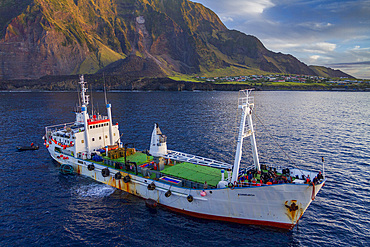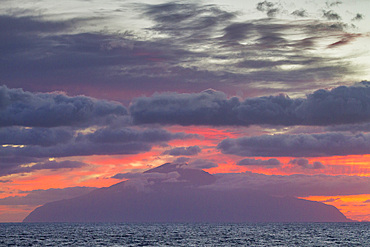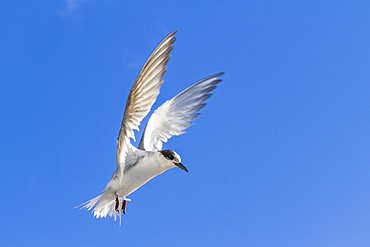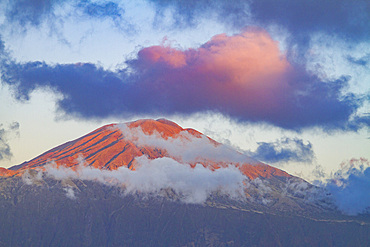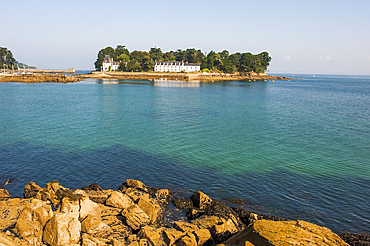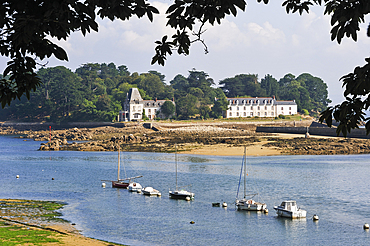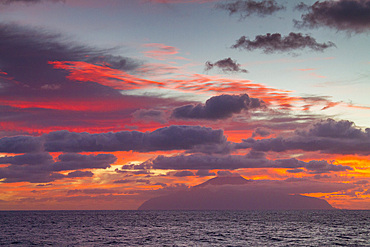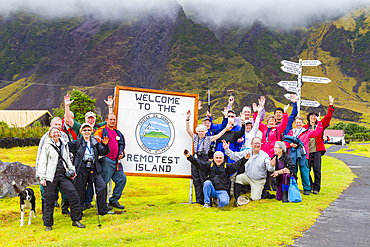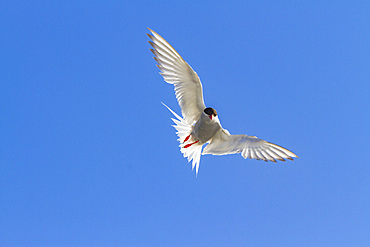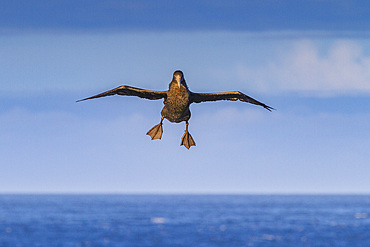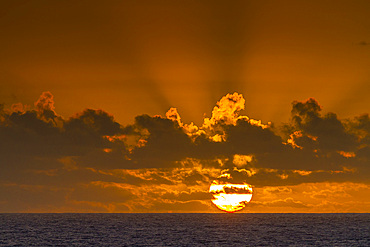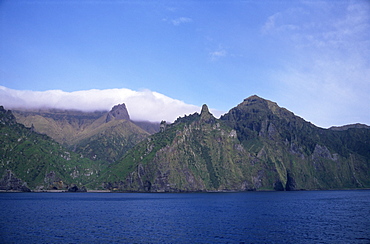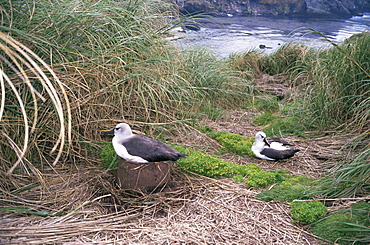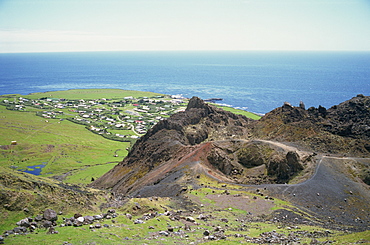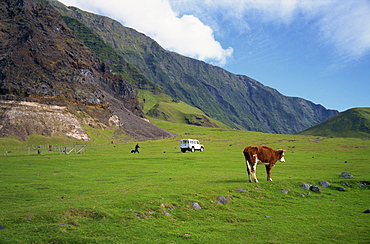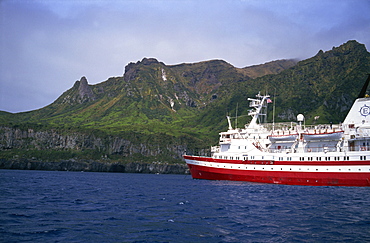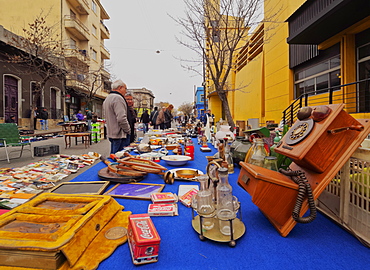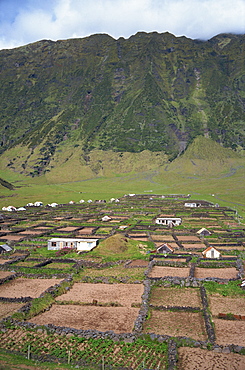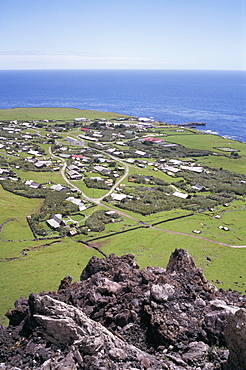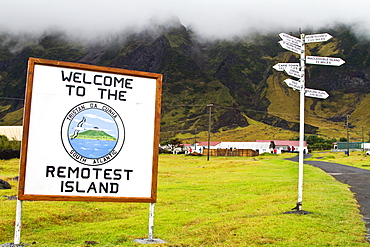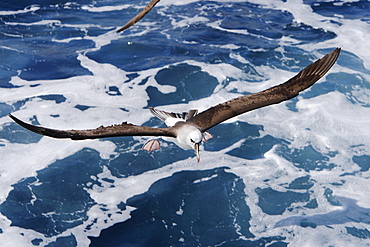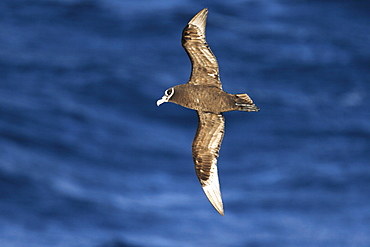Results
74 results found
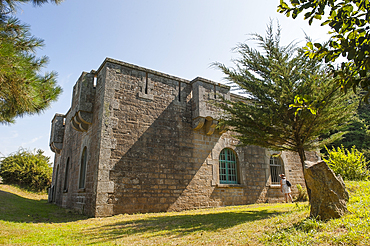
Small fort on Tristan Island off Douarnenez,Finistere department,Brittany region,west of France,western Europe
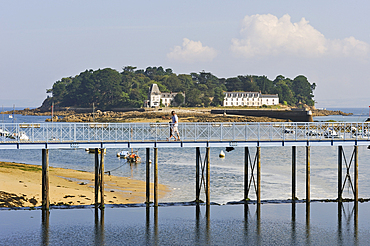
Jean Marin footbridge accross the Pouldavid River with Tristan Island off Douarnenez in background, Port-Rhu,,Finistere department,Brittany region,west of France,western Europe
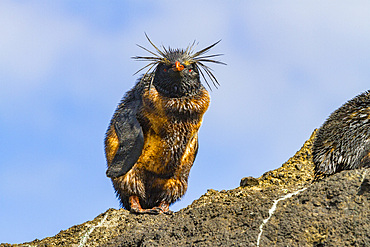
Northern rockhopper penguin (Eudyptes moseleyi) covered in spilled oil from the wreck of the MS Oliva, Nightingale island, Tristan da Cunha Group, South Atlantic Ocean
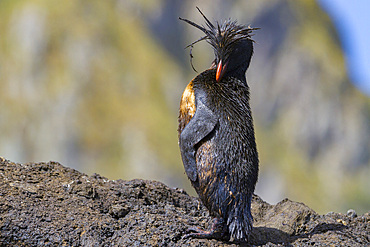
Northern rockhopper penguin (Eudyptes moseleyi) covered in spilled oil from the wreck of the MS Oliva, Nightingale island, Tristan da Cunha Group, South Atlantic Ocean
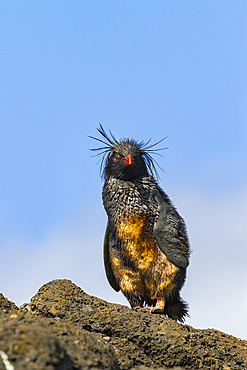
Northern rockhopper penguin (Eudyptes moseleyi) covered in spilled oil from the wreck of the MS Oliva, Nightingale island, Tristan da Cunha Group, South Atlantic Ocean
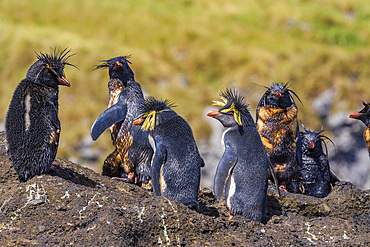
Northern rockhopper penguins (Eudyptes moseleyi) covered in spilled oil from the wreck of the MS Oliva, Nightingale island, Tristan da Cunha Group, South Atlantic Ocean
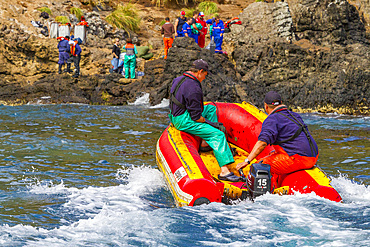
Crew from the rescue tug Smit Amandla from South Africa at the wreck of the MS Oliva on Nightingale island, Tristan da Cunha Group, South Atlantic Ocean
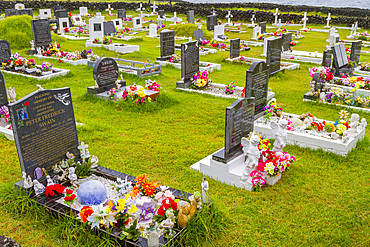
View of the cemetery in Tristan da Cunha, the most remote inhabited location on Earth, Tristan da Cunha, South Atlantic Ocean
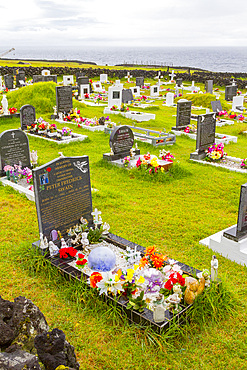
View of the cemetery in Tristan da Cunha, the most remote inhabited location on Earth, Tristan da Cunha, South Atlantic Ocean
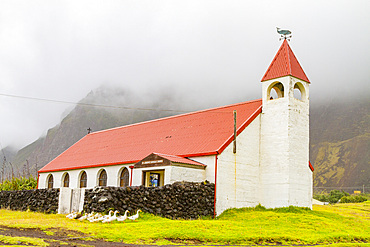
View of St. Joseph's Catholic Church in Tristan da Cunha, the most remote inhabited location on Earth, Tristan da Cunha, South Atlantic Ocean
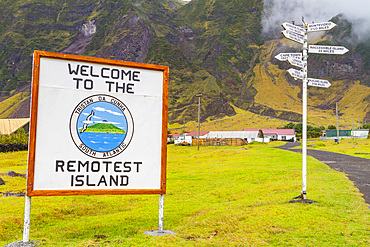
View of Welcome sign and signpost on Tristan da Cunha, the most remote inhabited location on Earth, Tristan da Cunha, South Atlantic Ocean
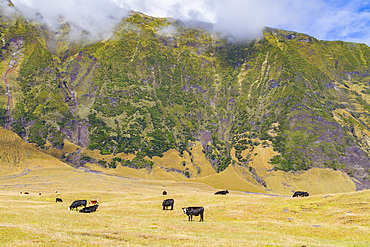
View of the potato patch on Tristan da Cunha, the most remote inhabited location on Earth, Tristan da Cunha, South Atlantic Ocean

Adult Antarctic tern (Sterna vittata) resting on ship's rail near Tristan da Cunha, South Atlantic Ocean
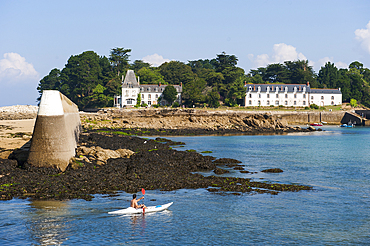
Kayak in front of Tristan Island off Douarnenez,Finistere department,Brittany region,west of France,western Europe
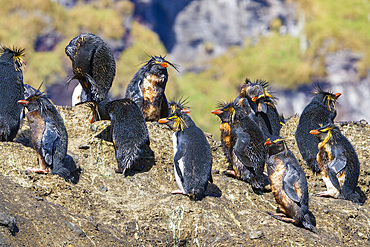
Northern rockhopper penguins (Eudyptes moseleyi) covered in spilled oil from the wreck of the MS Oliva, Nightingale island, Tristan da Cunha Group, South Atlantic Ocean
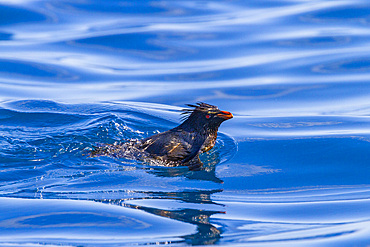
Northern rockhopper penguin (Eudyptes moseleyi) covered in spilled oil from the wreck of the MS Oliva, Nightingale island, Tristan da Cunha Group, South Atlantic Ocean
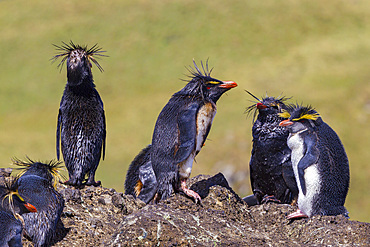
Northern rockhopper penguins (Eudyptes moseleyi) covered in spilled oil from the wreck of the MS Oliva, Nightingale island, Tristan da Cunha Group, South Atlantic Ocean
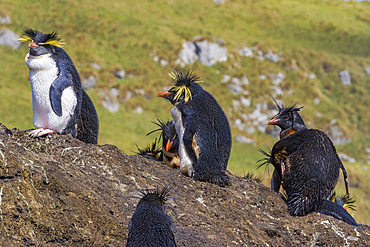
Northern rockhopper penguins (Eudyptes moseleyi) covered in spilled oil from the wreck of the MS Oliva, Nightingale island, Tristan da Cunha Group, South Atlantic Ocean
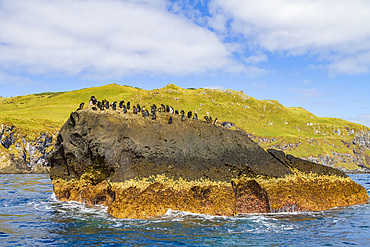
Northern rockhopper penguins (Eudyptes moseleyi) covered in spilled oil from the wreck of the MS Oliva, Nightingale island, Tristan da Cunha Group, South Atlantic Ocean
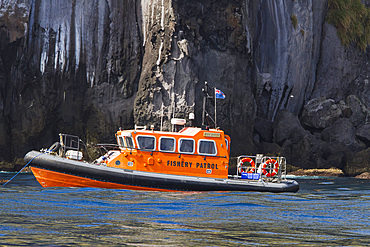
View of the rescue fishery patrol boat Wave Dancer at the wreck of the MS Oliva on Nightingale island, Tristan da Cunha Group, South Atlantic Ocean

View of St. Joseph's Catholic Church in Tristan da Cunha, the most remote inhabited location on Earth, Tristan da Cunha, South Atlantic Ocean
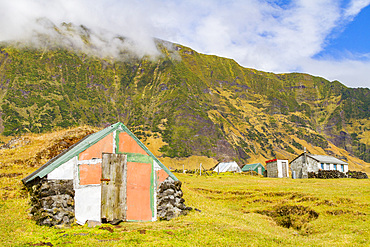
View of the potato patch on Tristan da Cunha, the most remote inhabited location on Earth, Tristan da Cunha, South Atlantic Ocean
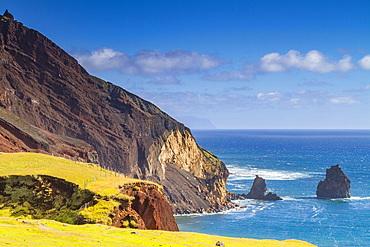
View of the volcanic shoreline on Tristan da Cunha, the most remote inhabited location on Earth, Tristan da Cunha, South Atlantic Ocean
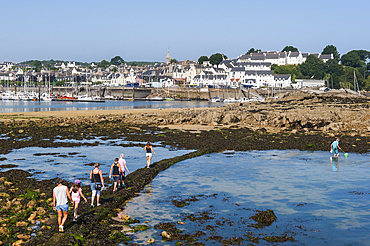
Fording to Tristan Island off Douarnenez,Treboul in background,Finistere department,Brittany region,west of France,western Europe
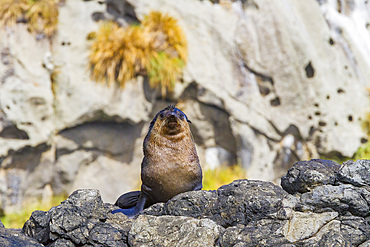
Subantarctic fur seal (Arctocephalus tropicalis) hauled out on the shore of Nightingale Island, Tristan da Cunha Island Group, South Atlantic Ocean
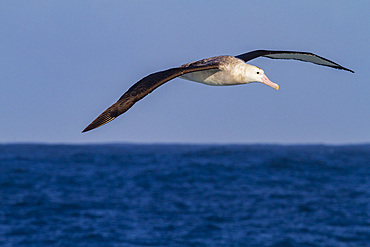
Adult wandering albatross (Diomedea exulans) in flight near the Tristan da Cunha Group, South Atlantic Ocean
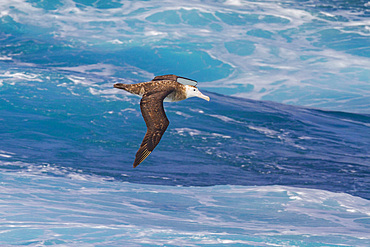
Adult wandering albatross (Diomedea exulans) in flight near the Tristan da Cunha Group, South Atlantic Ocean
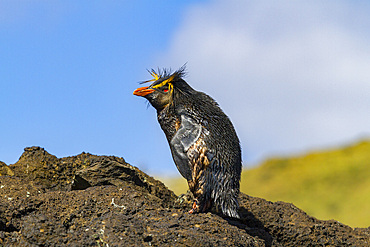
Northern rockhopper penguin (Eudyptes moseleyi) covered in spilled oil from the wreck of the MS Oliva, Nightingale island, Tristan da Cunha Group, South Atlantic Ocean
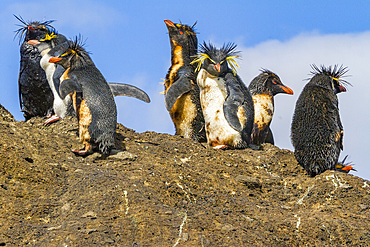
Northern rockhopper penguins (Eudyptes moseleyi) covered in spilled oil from the wreck of the MS Oliva, Nightingale island, Tristan da Cunha Group, South Atlantic Ocean
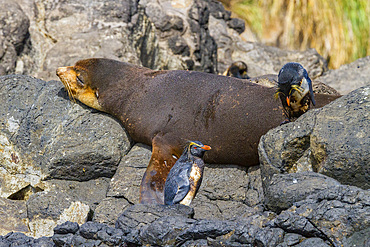
Northern rockhopper penguins (Eudyptes moseleyi) covered in spilled oil from the wreck of the MS Oliva, Nightingale island, Tristan da Cunha Group, South Atlantic Ocean
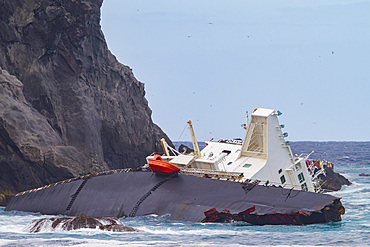
The wreck of the MS Oliva on Nightingale Island, part of the Tristan da Cunha Group, South Atlantic Ocean
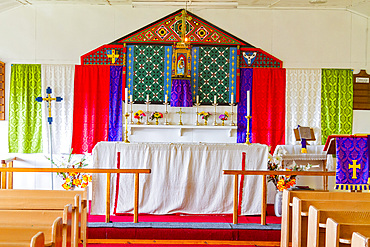
Brightly coloured altar inside a church on Tristan da Cunha, the most remote inhabited location on Earth, Tristan da Cunha, South Atlantic Ocean
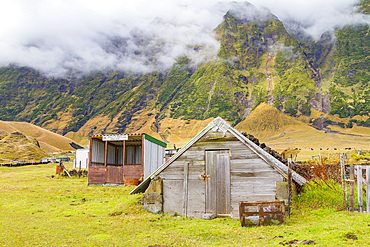
View of the potato patch on Tristan da Cunha, the most remote inhabited location on Earth, Tristan da Cunha, South Atlantic Ocean
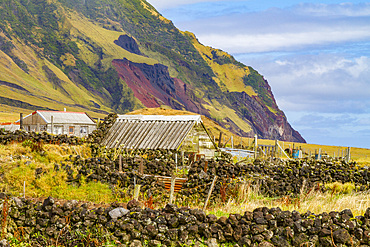
View of the potato patch on Tristan da Cunha, the most remote inhabited location on Earth, Tristan da Cunha, South Atlantic Ocean
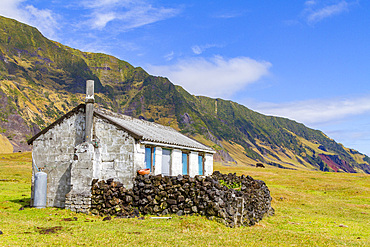
View of the potato patch on Tristan da Cunha, the most remote inhabited location on Earth, Tristan da Cunha, South Atlantic Ocean
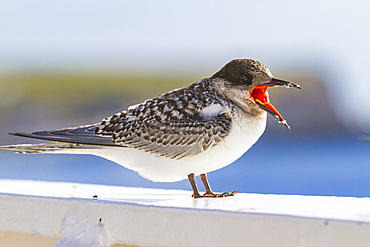
Juvenile Antarctic tern (Sterna vittata) resting on ship's rail near Tristan da Cunha, South Atlantic Ocean
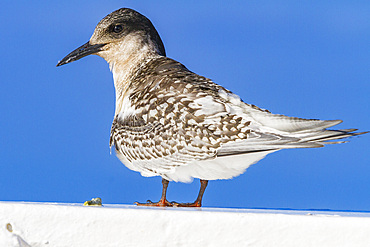
Juvenile Antarctic tern (Sterna vittata) resting on ship's rail near Tristan da Cunha, South Atlantic Ocean
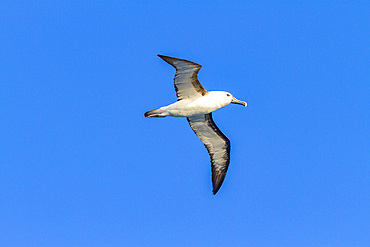
Adult yellow-nosed albatross (Thalassarche chlorohynchos) in flight near the Tristan da Cunha Group, South Atlantic Ocean
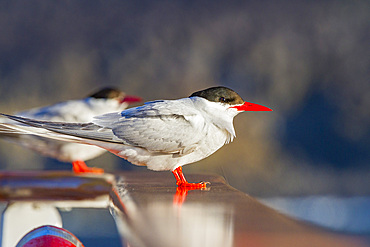
Adult Antarctic tern (Sterna vittata) resting on the National Geographic Explorer near Tristan da Cunha, South Atlantic Ocean
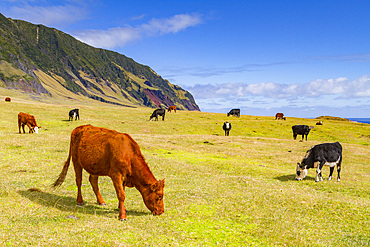
View of the potato patch on Tristan da Cunha, the most remote inhabited location on Earth, Tristan da Cunha, South Atlantic Ocean
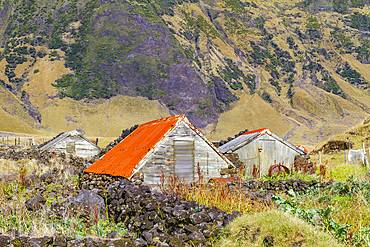
View of the potato patch on Tristan da Cunha, the most remote inhabited location on Earth, Tristan da Cunha, South Atlantic Ocean

View of the volcanic shoreline on Tristan da Cunha, the most remote inhabited location on Earth, Tristan da Cunha, South Atlantic Ocean
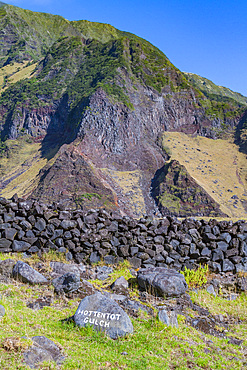
View of Tristan da Cunha, the most remote inhabited location on Earth, Tristan da Cunha, South Atlantic Ocean

Adult spectacled petrel (Procellaria conspicillata) in flight near Nightingale Island, part of the Tristan da Cunha Group, South Atlantic Ocean
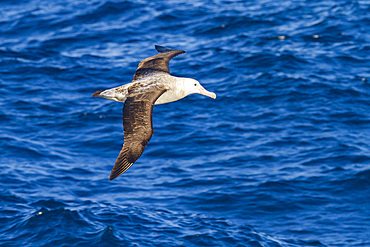
Adult wandering albatross (Diomedea exulans) in flight near the Tristan da Cunha Group, South Atlantic Ocean
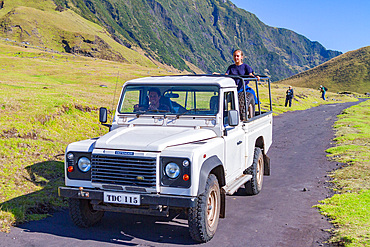
Tourist vehicle on Tristan da Cunha, the most remote inhabited location on Earth, Tristan da Cunha, South Atlantic Ocean
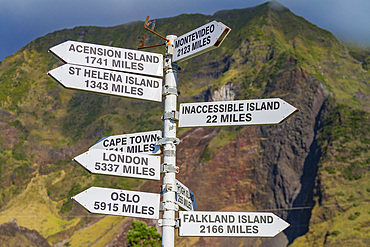
Close-up of signpost on Tristan da Cunha, the most remote inhabited location on Earth, Tristan da Cunha, South Atlantic Ocean
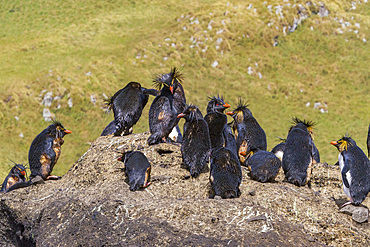
Northern rockhopper penguins (Eudyptes moseleyi) covered in spilled oil from the wreck of the MS Oliva, Nightingale island, Tristan da Cunha Group, South Atlantic Ocean
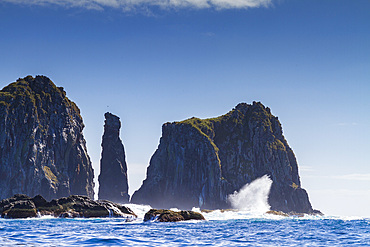
View of the waters surrounding Nightingale Island, part of the Tristan da Cunha Group, South Atlantic Ocean
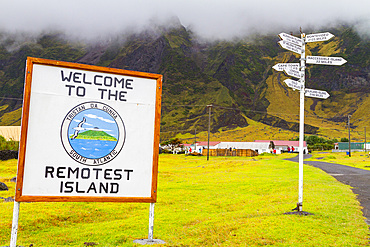
View of Welome sign and signpost on Tristan da Cunha, the most remote inhabited location on Earth, Tristan da Cunha, South Atlantic Ocean
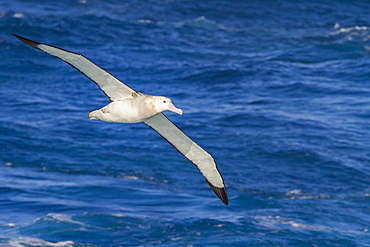
Adult wandering albatross (Diomedea exulans) in flight near the Tristan da Cunha Group, South Atlantic Ocean
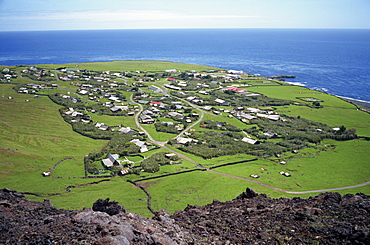
The settlement from the 1961 volcanic cone, with the ocean in the background, Edinburgh, Tristan da Cunha, Mid Atlantic
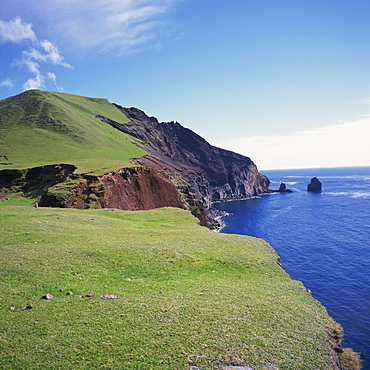
Grass topped cliffs along the north west coast between the settlement of Edinburgh and potato patches, on Tristan da Cunha, Mid Atlantic
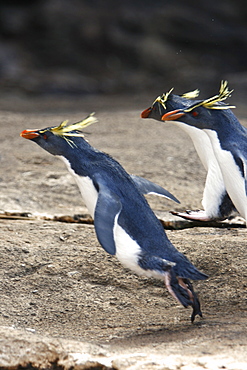
Adult rockhopper penguins (Eudyptes chrysocome moseleyi) "hopping" on Nightingale Island in the Tristan da Cunha Island Group, South Atlantic Ocean
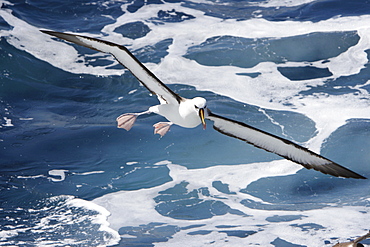
Adult yellow-nosed albatross (Thalassarche chlororhynchos) on the wing in the oceanic waters surrounding the Tristan da Cunha Island Group in the South Atlantic Ocean.
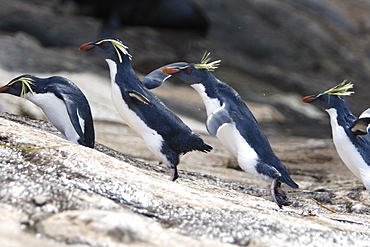
Adult rockhopper penguin (Eudyptes chrysocome moseleyi) "hopping" on Nightingale Island in the Tristan da Cunha Island Group, South Atlantic Ocean
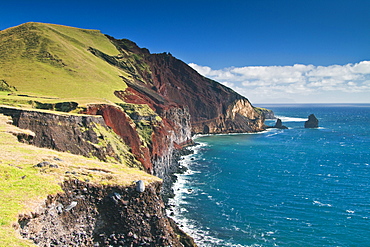
View of the volcanic shoreline on Tristan da Cunha, "the most remote inhabited location on Earth", South Atlantic Ocean

Young rockhopper penguin (Eudyptes chrysocome moseleyi) molting on Nightingale Island in the Tristan da Cunha Island Group, South Atlantic Ocean
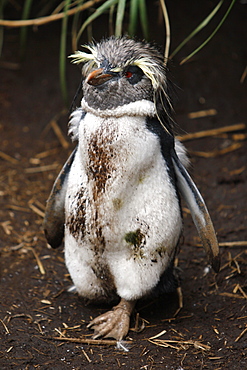
Adult rockhopper penguin (Eudyptes chrysocome moseleyi) going through a catastrophic molt on Nightingale Island in the Tristan da Cunha Island Group, South Atlantic Ocean
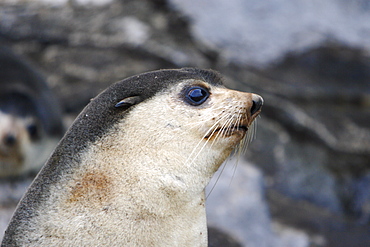
Sub-Antarctic fur seal (Arctocephalus tropicalis) on Nightingale Island in the Tristan da Cunha Island Group in the southern Atlantic Ocean
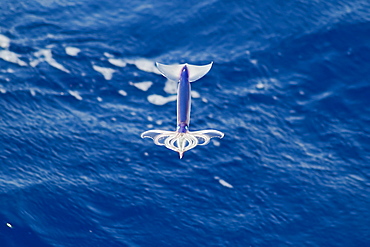
Flying Squid Species in mid-air, roughly 100 nm North of Tristan Da Cunha, South Atlantic Ocean. Flying Squid use membranes between their tentacles (visible on pic) & two fins at the rear of the mantle to glide through the air in a similar way to flying fish.

Tristan Albatross (Diomedea exulans dabbenena) Juvenile. Endangered. Rare unusual image. Off Gough Island, South Atlantic Ocean.
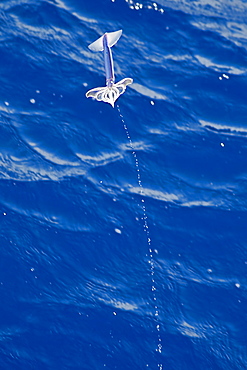
Flying Squid Species in mid-air leaving a water trail behind it, roughly 100 nm North of Tristan Da Cunha, South Atlantic Ocean. Flying Squid use membranes between their tentacles (visible on pic) & two fins at the rear of the mantle to glide through the air in a similar way to flying fish.
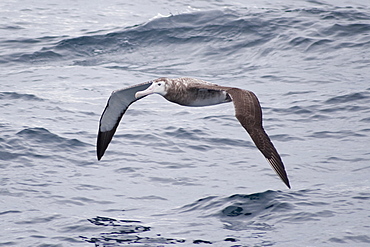
Tristan Albatross (Diomedea exulans dabbenena) Juvenile. Endangered. Rare unusual image. Off Gough Island, South Atlantic Ocean.
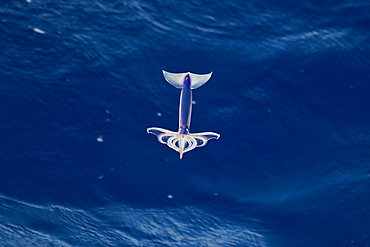
Flying Squid Species in mid-air, roughly 100 nm North of Tristan Da Cunha, South Atlantic Ocean. Flying Squid use membranes between their tentacles (visible on pic) & two fins at the rear of the mantle to glide through the air in a similar way to flying fish.
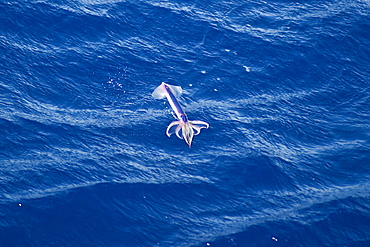
Flying Squid Species in mid-air, roughly 100 nm North of Tristan Da Cunha, South Atlantic Ocean. Flying Squid use membranes between their tentacles (visible on pic) & two fins at the rear of the mantle to glide through the air in a similar way to flying fish.

Northern Rockhopper Penguins, Eudyptes moseleyi, endangered, endemic to the Tristan Da Cunha island group, taken from a Zodiac at Gough Island (landing is not allowed on Gough Island itself), South Atlantic Ocean.
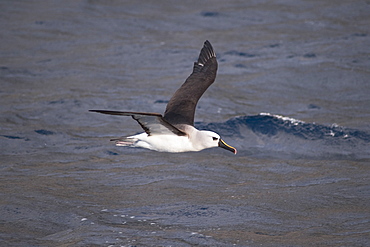
Atlantic Yellow-nosed Albatross (Thalassarche chlororhynchos chlororhynchos) adult bird taking off. Off the Island of Tristan Da Cunha, South Atlantic Ocean.
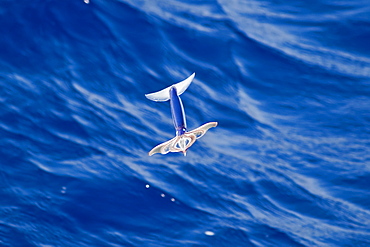
Flying Squid Species in mid-air, roughly 100 nm North of Tristan Da Cunha, South Atlantic Ocean. Flying Squid use membranes between their tentacles (visible on pic) & two fins at the rear of the mantle to glide through the air in a similar way to flying fish.
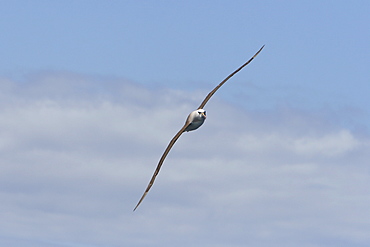
Adult yellow-nosed albatross (Thalassarche chlororhynchos) on the wing in the oceanic waters surrounding the Tristan da Cunha Island Group in the South Atlantic Ocean.
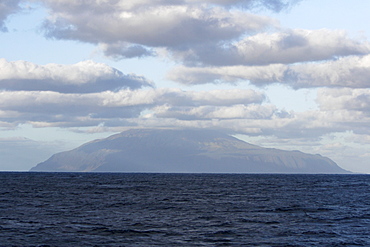
Approaching the island of Tristan da Cunha from the south, claimed to be the most remote inhabited island in the world.
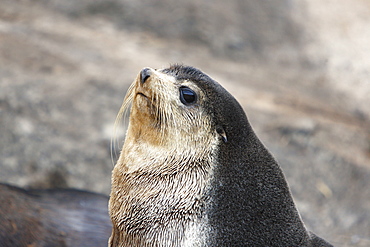
Sub-Antarctic fur seal (Arctocephalus tropicalis) on Nightingale Island in the Tristan da Cunha Island Group in the southern Atlantic Ocean
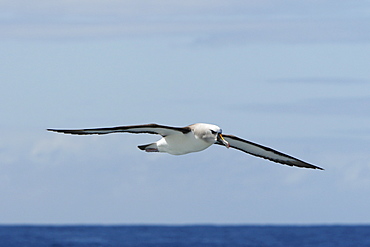
Adult yellow-nosed albatross (Thalassarche chlororhynchos) on the wing in the oceanic waters surrounding the Tristan da Cunha Island Group in the South Atlantic Ocean.
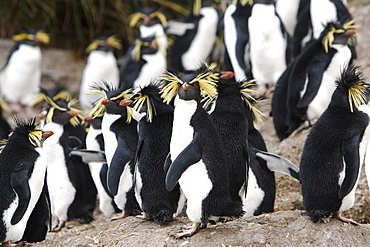
Adult rockhopper penguins (Eudyptes chrysocome moseleyi) on Nightingale Island in the Tristan da Cunha Island Group, South Atlantic Ocean
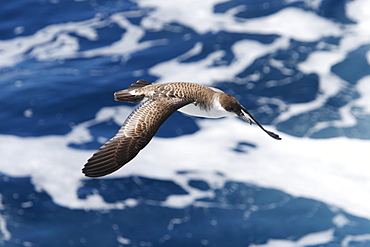
Adult Great Shearwater (Puffinus gravis) on the wing in the Tristan da Cunha Island Group, Soauth Atlantic Ocean.
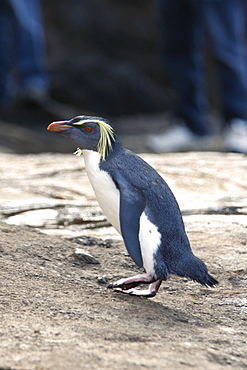
Adult rockhopper penguin (Eudyptes chrysocome moseleyi) on Nightingale Island in the Tristan da Cunha Island Group, South Atlantic Ocean
